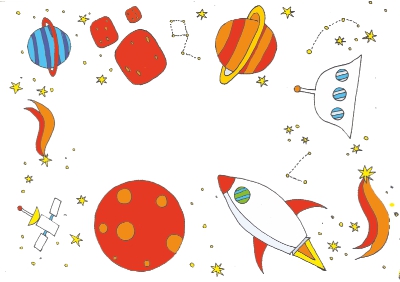
a. United States of America
b. Russia
c. Sweden
d. France
2. An unexpected visitor was sent into space on an experimental mission by the Russians in 1957. This was a
a. Dog
b. Cat
c. Hamster
d. Gorilla
3. The planet farthest from the Sun is
a. Mercury
b. Uranus
c. Pluto
d. Mars
4. The four planets closest to the Sun — Mercury, Venus, Earth & Mars are also known as terrestrial planets. What does it mean?
a. It means they have solid, rocky surfaces
b. It means they have only animal life
c. It means that plants only can survive
d. It means that there is no atmosphere
5. Who was the first cosmonaut to travel almost two hours in a space vehicle. (This vehicle circled the globe at a distance of 320 km above the surface.)
a. Neil Armstrong
b. Yuri Gagarin
c. Edmund Hillary
d. Mallory
6. What is the average orbit period of Halley’s comet?
a. 100 years
b. 52 years
c. 85 years
d. 76 years
7. What gases does the sun emanate?
a. Hydrogen & Helium
b. Hydrogen & Oxygen
c. Oxygen & Nitrogen
d. Nitrogen & Carbon dioxide
8. In 1969 the US planned a mission to land a team on the moon. Who was the first man on the moon?
a. Colin Firth
b. Neil Armstrong
c. Yuri Gagarin
d. Alan Shepard
9. Which is the star closest to the Earth?
a. Sun
b. Sirius
c. Arcturus
d. Capella
10. What is Russian cosmonaut Alexei Leonov famous for?
a. First to fly into space
b. He was the first to land on Mars
c. He was first to pilot a space shuttle
d. He was the first to do a 12-minute spacewalk.
11. What is true about stationary satellites?
a. They are stationed in space
b. They are static and closer to the moon
c. They rotate once in a month
d. They are moving in orbits 22,300 miles above the Earth (hence, they seem to stand still)
12. Which is the fastest spinning planet in the solar system?
a. Mercury
b. Uranus
c. Neptune
d. Jupiter
Answers
1. b 2. a 3. c 4. a 5. b 6. d 7. a 8. b 9. a 10. d 11. d 12. d